| ALL |
|
HOTEL
| OVERVIEW |
|
| |
At the most basic level, a hotel provides temporary shelter for travelers, a function that the 20th-century hotel shares with its predecessors extending back to the ancient inn. As a modern building type, the hotel integrates a complex variety of uses, including lodging, food service, and retail, into a specialized building program. After the office building, the hotel is the most important building type to embrace the skyscraper form, thus addressing the architectural challenge of efficiently arranging co-dependent yet distinct public, private, and service spaces. Hotels generally have major public spaces on the lower- and uppermost floors, largely identical floors of guest rooms between, and related service areas carefully woven throughout the plan. This basic program appeared in the 19th century and was associated with large railway hotels located in cities around the world. However, the scale and complexity of the 20th-century hotel make it a distinctive building type and an important focal point in the urban landscape. By virtue of its location, the resort hotel caters to tourists and merits its own analysis. The hotel is a building type intimately linked to the socio-economic changes of the 20th century. The rise of a consumer culture, especially in the United States, spurs urban growth and directly benefits service-sector businesses such as the hotel industry. Increased tourism, widely accessible commercial travel, and annual conventions provide an expanded clientele for the commercial hotel. Since the early decades of the 20th century, competition to attract conventions has especially shaped the planning of new hotels. Major exhibit halls, meeting rooms, and auditoriums require a large percentage of space on the public floors of the hotel to be devoted to convention-related facilities. These trends first peaked in the 1920s, making that decade the heyday of the development of the hotel as a 20th-century building type. New hotels, such as the Roosevelt (1924, George B. Post and Sons) in New York, Hotel Statler (1927, George B. Post and Sons) in Boston, and the Los Angeles Biltmore (1923, Schultze and Weaver), are just a few of the massive hotels from that period with around 1,000 guest rooms. The Stevens Hotel (Holabird and Roche), the largest hotel in the world, opened on South Michigan Avenue in Chicago in 1927. With 3,000 guest rooms, 3,000 baths, and a huge array of public spaces, dining rooms, and convention facilities, the Stevens epitomizes the early 20th-century architectural development of the hotel. The balance between the commercial purpose of the hotel and the need to create a domestic atmosphere often led hotels to embrace historically inspired architectural styles and interior design. Multitowered, Beaux-Arts-influenced skyscraper forms with eclectic decorative programs were common during the early 20th century.
After World War I, hotels followed the shift to modernism in commercial architecture. The resulting aesthetic change to ahistoric minimalism was dramatic, but hotels largely retained the same basic functional arrangement and a preference for mainstream architectural styles. Hotels often feature a combination of conservative architectural design and innovative systems and technology. Among the most significant hotels in the 19th century, Adler and Sullivan's Auditorium Building (1889) in Chicago combined theater, a modern hotel, and office space. Using the latest in modern conveniences has been vital to a hotel's success since the 19th century, and 20th-century hotels quickly incorporated any important new technology. The most significant improvements were plumbing and air conditioning and their subsequent influence on the form and use of the hotel. Although indoor plumbing was available in 19th-century hotels, private baths were relatively rare. The basic standard for hotels changed rapidly in the early 20th century, and by the 1920s nearly all new hotels provided a private bathroom for each guest room. Arranging and servicing the bathrooms are problems specific to the 20th-century hotel. The architectural firm of George B. Post and Sons developed an efficient layout to provide private bathrooms in an affordable commercial hotel with its designs for the important early chain Hotels Statler.
Bathrooms arranged in pairs along the interior wall create mirror-image room plans that allow two bathrooms to share one plumbing shaft. Standardized hotel architecture did not emerge until the postwar period, but this plan was an important first step. Ventilation creates another challenge for the 20th-century hotel. The multiple towers of the large pre-World War I hotel provide exterior light and air to all the guest rooms. Mechanical air conditioning was first introduced in the public rooms of some major urban hotels in the 1920s. Starting in the 1950s, new hotels provided air-conditioned guest rooms, eliminating dependence on exterior ventilation. The new possibilities that air conditioning brings to the hotel form are perhaps best utilized by the Hyatt Regency Hotels of John Portman and Associates. Portman's Hyatt Regency Atlanta (1967), Hyatt Regency O'Hare (1971), and Hyatt Regency San Francisco (1973) feature dramatic new forms focused inward on the atrium lobby. Portman and his imitators use a modernist vocabulary to create the grand public space of the atrium, but the functional program of the hotel remains essentially the same. External forces, such as urban development and transportation patterns, also help reconfigure the fundamental relationship between the hotel and location.
The shift in the United States from railroad to automobile travel transforms the shape, scale, and location of hotels. The downtown skyscraper hotel usually lacks parking facilities, and motels emerge along highways to serve the interstate traveler. In the post-World War II period, hotel development moves beyond downtown, especially with construction around outlying airports. However, the form and program of the hotel building type remain essentially urban. The American hotel defines the building type throughout the 20th century, especially in the postwar period with the growing international dominance of a few large hotel chains. The standardized Hilton, Sheraton, or Marriott hotel, more than any other building, symbolizes American commercial culture throughout the world. Standardized commercial hotels sell a self-contained vision of urban order and prosperity closely tied to the emergence of a deindustrialized global economy. Throughout the 20th century, hotels reflect the impact of economic change in the urban landscape and the social demands that shape a complex commercial building type.
LISA PRUELLER DAVIDSON
Sennott R.S. Encyclopedia of twentieth century architecture, Vol.2 (G-O). Fitzroy Dearborn., 2005. |
| |
|
| |
|
| |
|
| |
|
| |
|
| |
|
| |
|
| GALLERY |
|
| |
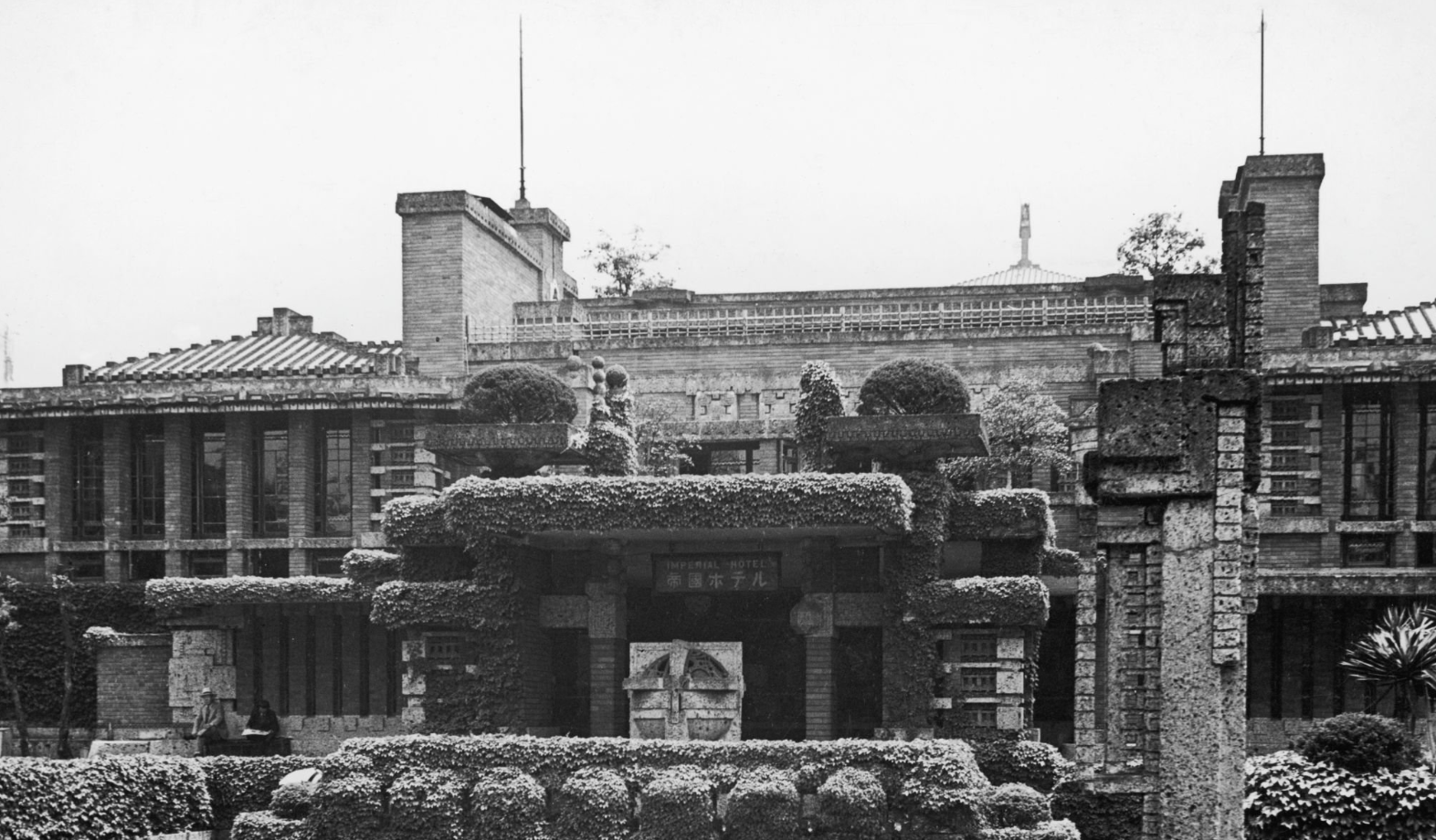 |
| |
1922, Imperial Hotel, Tokyo, JAPAN, FRANK LLOYD WRIGHT |
| |
|
| |
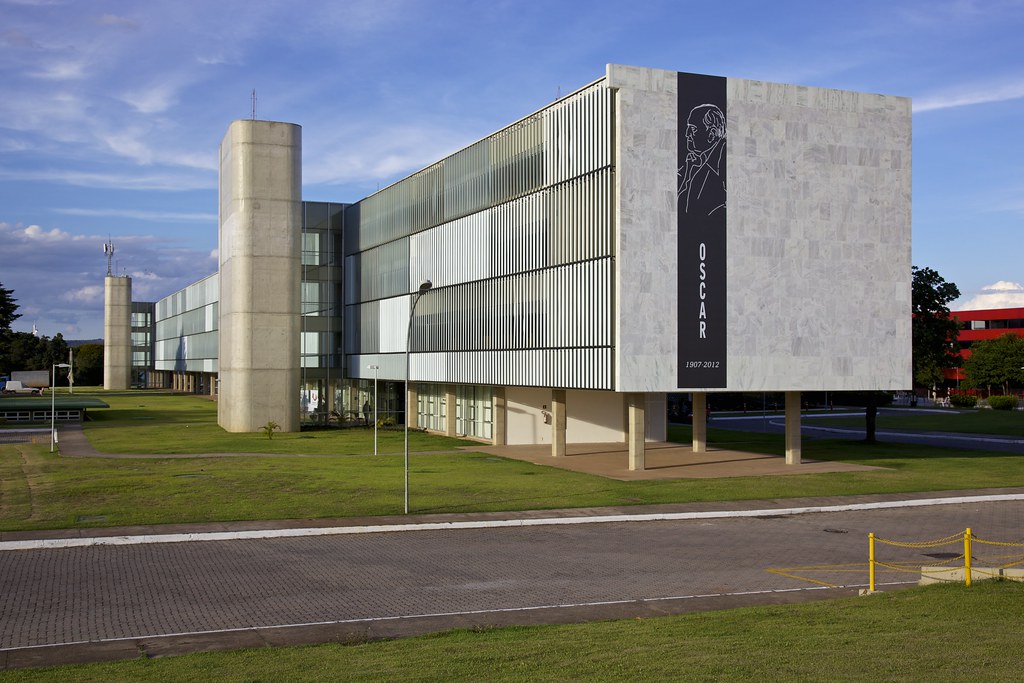 |
| |
1951, HOTEL TIJUCO, DIAMANTINA, BRAZIL, OSCAR NIEMEYER |
| |
|
| |
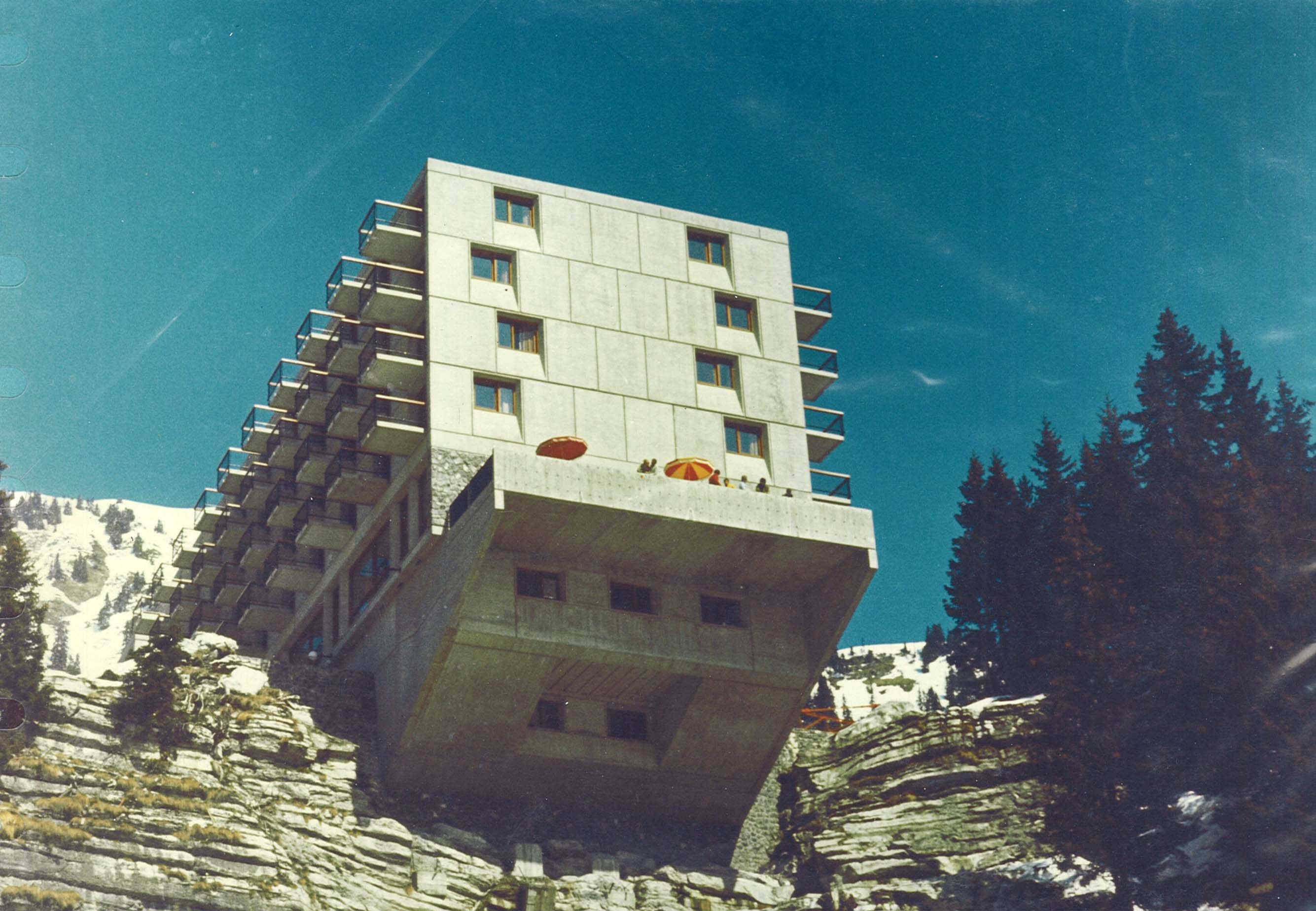 |
| |
1960-1969, Resort town, Flaine, Haute Savoie, FRANCE, MARCEL BREUER |
| |
|
| |
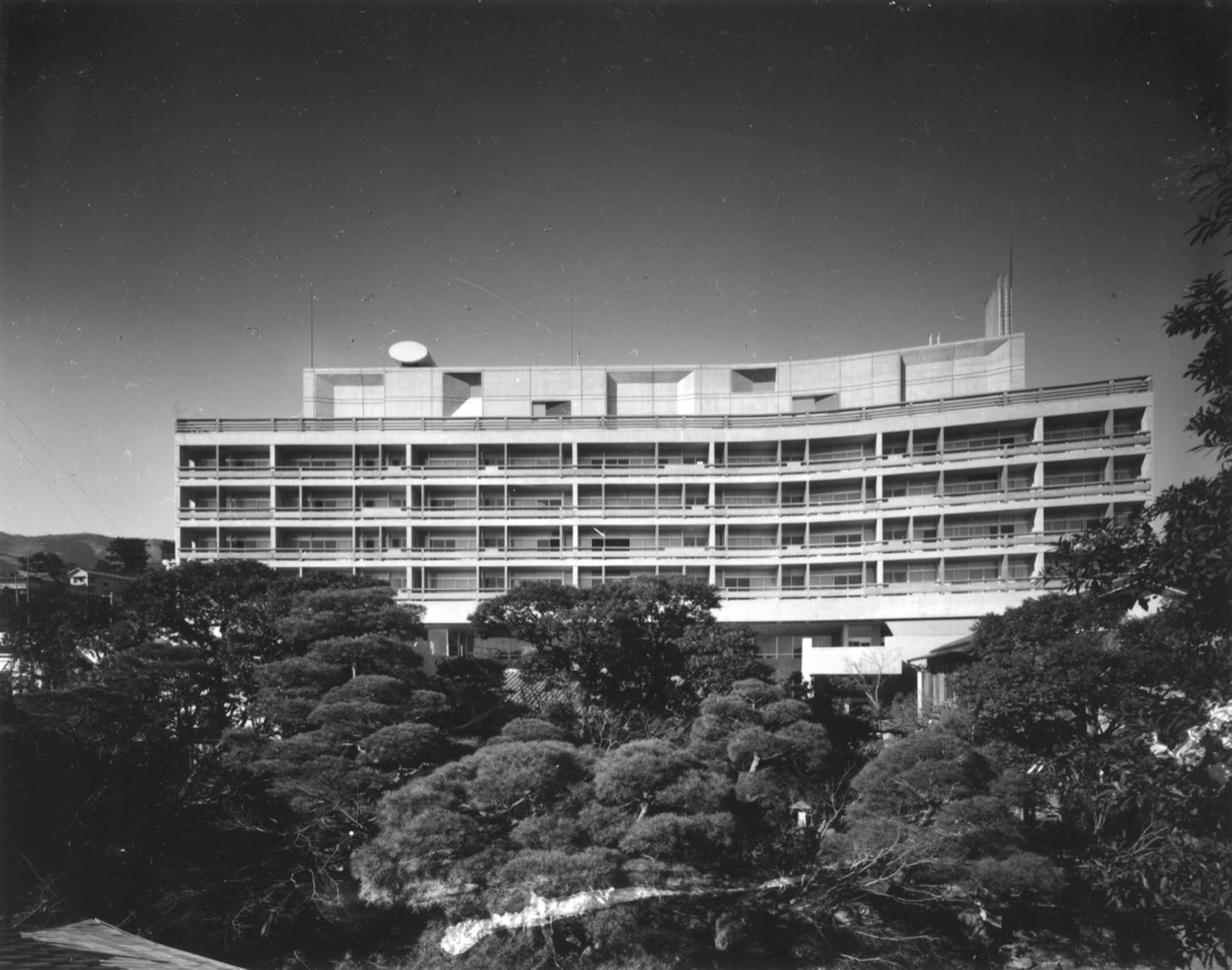 |
| |
1961, Atami Garden Hotel, Kanagawa, JAPAN, KENZO TANGE |
| |
|
| |
 |
| |
1973–1980, Porto Carras, Chalkidiki, Greece, WALTER GROPIUS |
| |
|
| |
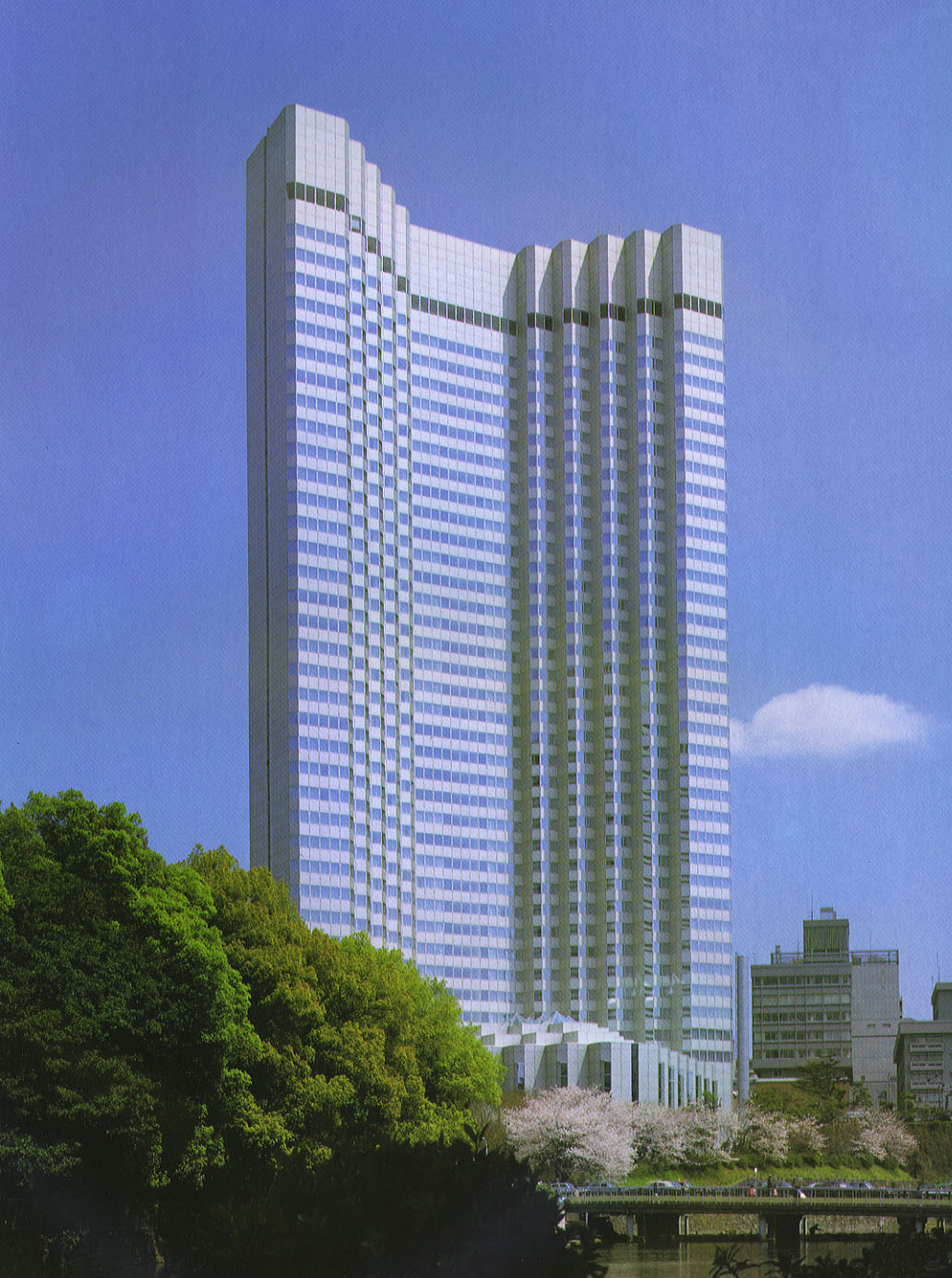 |
| |
1982, Akasaka Prince Hotel, Tokyo, JAPAN, KENZO TANGE |
| |
|
| |
 |
| |
1982, Fragrant Hill Hotel, Beijing, CHINA, I.M. PEI |
| |
|
| |
 |
| |
1987-1989, The St.James hotel, Bouliac, France, JEAN NOUVEL |
| |
|
| |
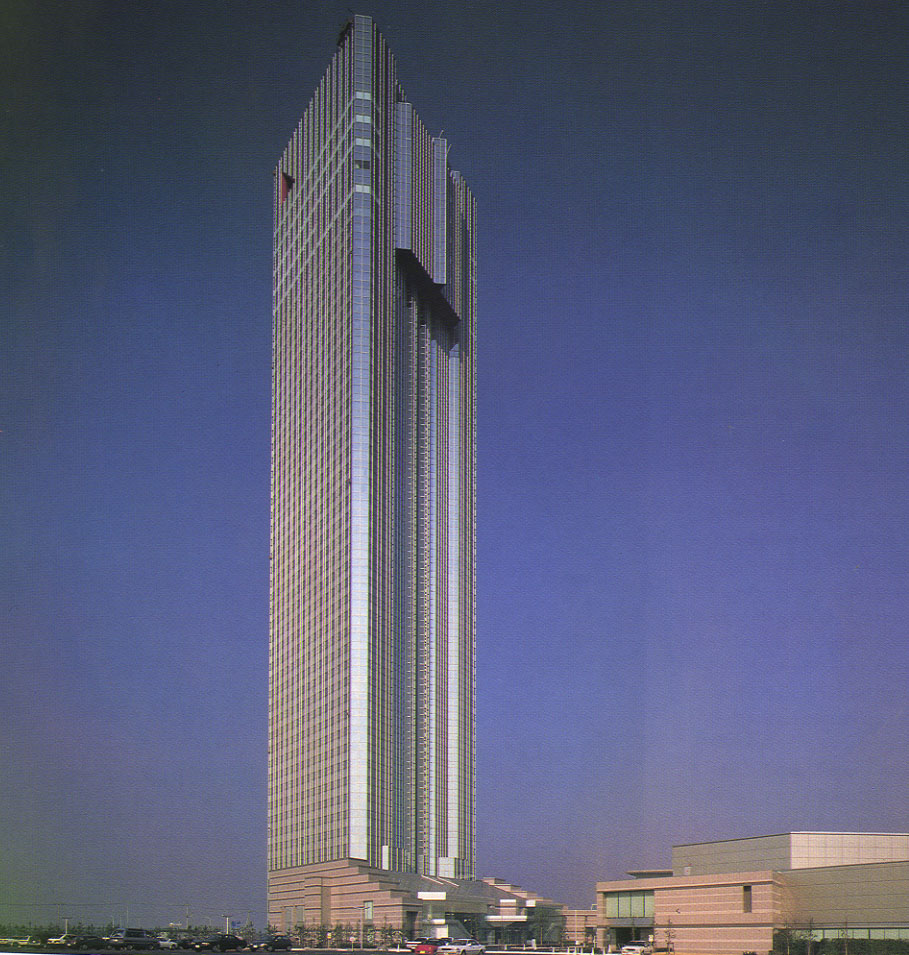 |
| |
1993, APA HOTEL & RESORT TOKYO BAY Central Tower, Chiba, JAPAN, KENZO TANGE |
| |
|
| |
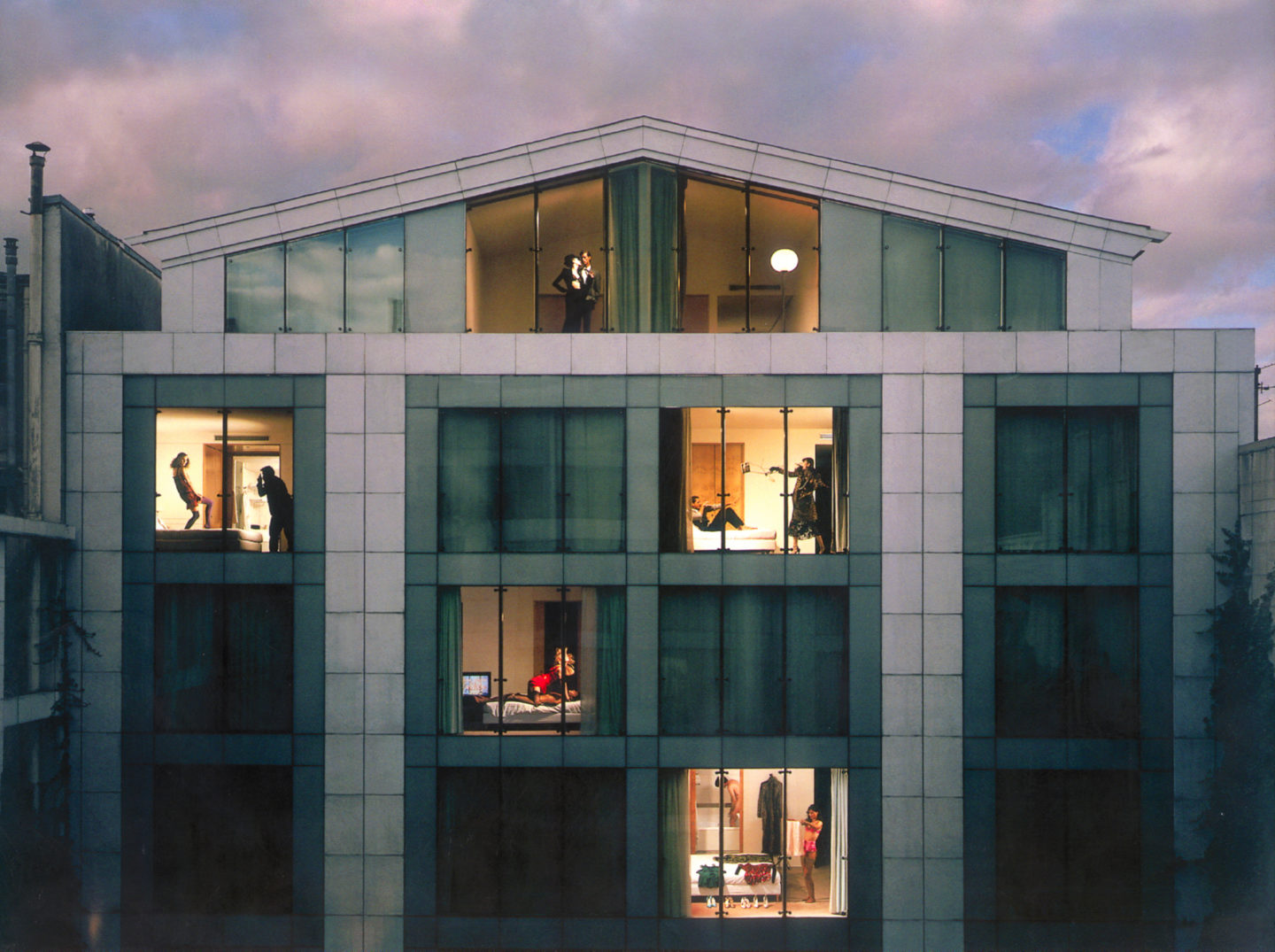 |
| |
1993, Costes K Hotel, Paris, France, RICARDO BOFILL |
| |
|
| |
, Tokyo, JAPAN, KENZO TANGE.jpeg) |
| |
1994, Shinjuku Park Tower (Park Hyatt Tokyo), Tokyo, JAPAN, KENZO TANGE |
| |
|
| |
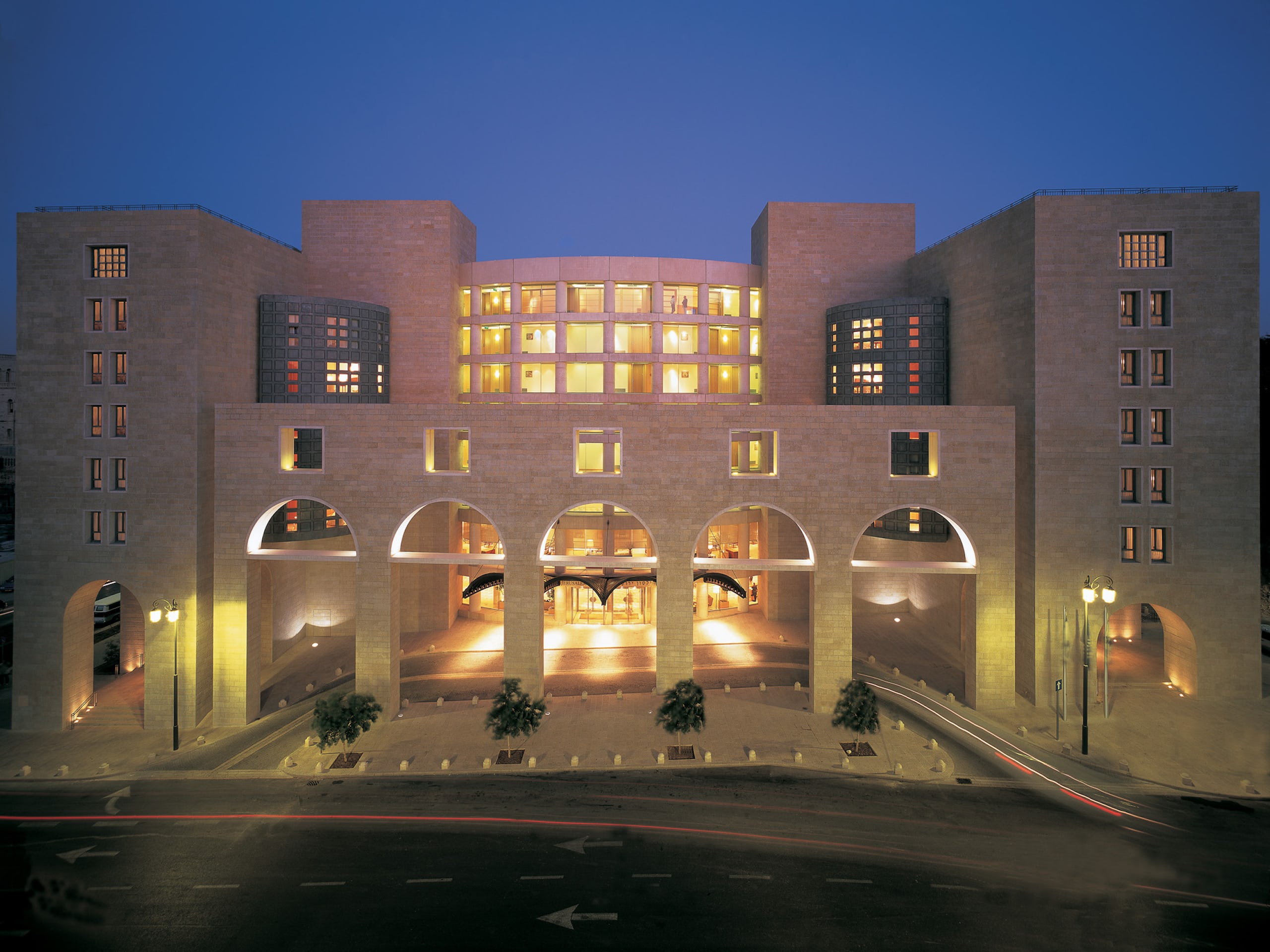 |
| |
1998, David Citadel Hotel, Jerusalem, Israel, MOSHE SAFDIE |
| |
|
| |
 |
| |
2003-2005, Puerta America Hotel, Madrid, Spain, JEAN NOUVEL |
| |
|
| |
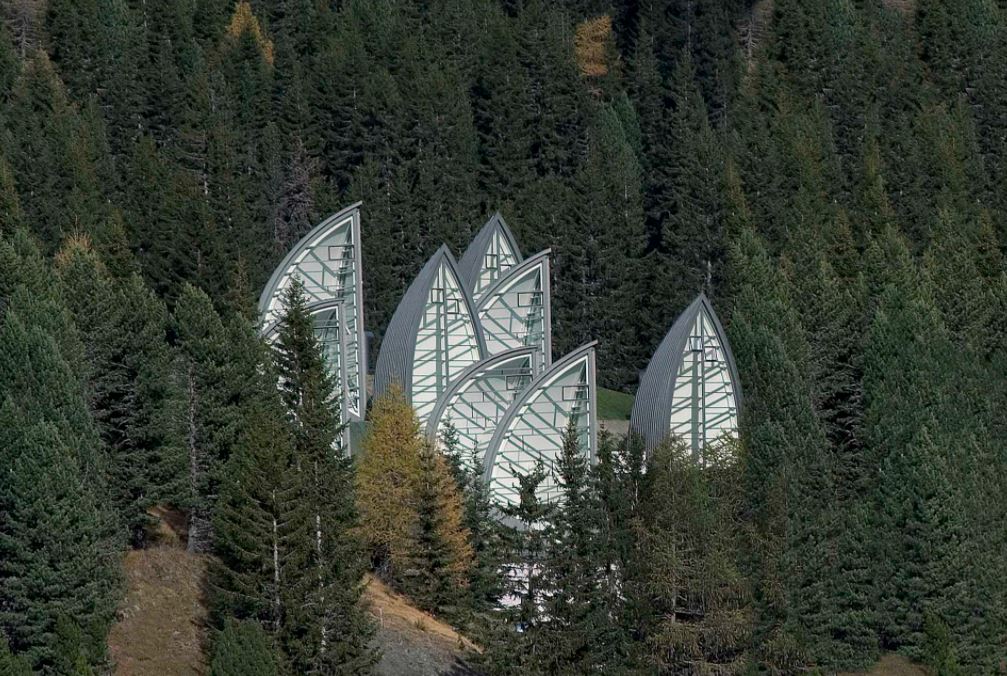 |
| |
2003-2006, Tschuggen Bergoase, Arosa, SWITZERLAND, MARIO BOTTA |
| |
|
| |
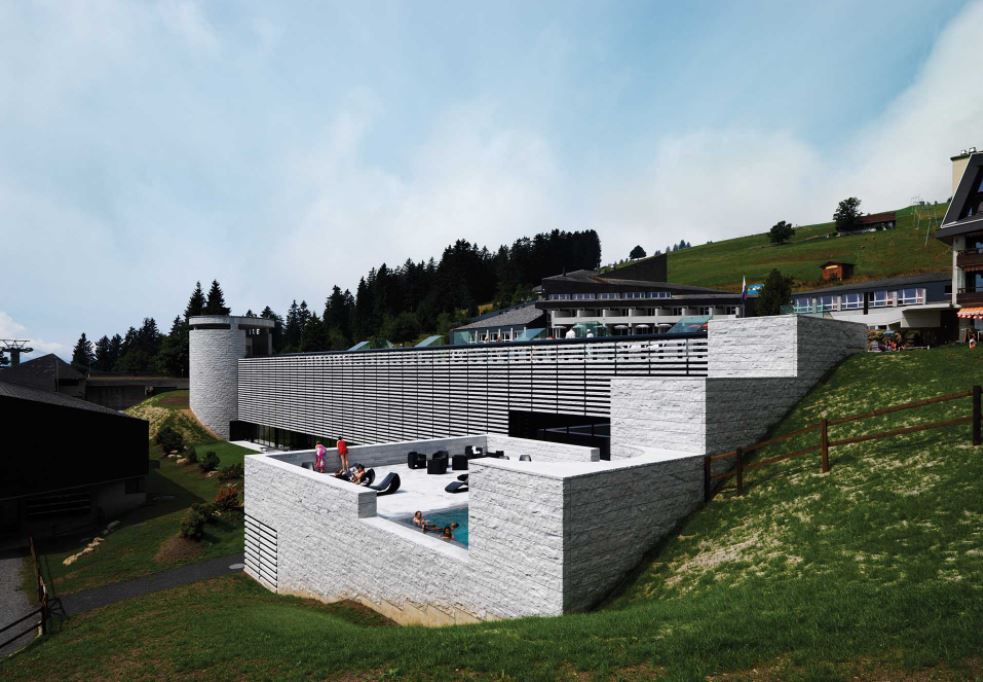 |
| |
2004-2012, Square and spa, Rigi Kaltbad, Switzerland, MARIO BOTTA |
| |
|
| |
 |
| |
2005-2010, Sofitel Hotel, Vienna, Austria, JEAN NOUVEL |
| |
|
| |
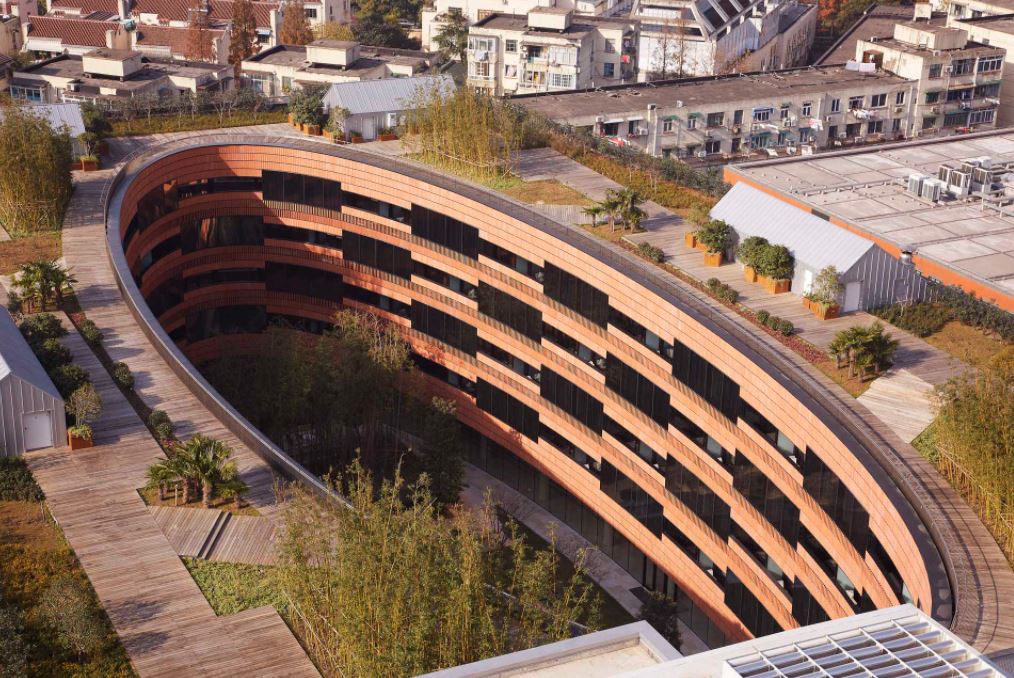 |
| |
2006-2012, Hotel Twelve, Shanghai, China, MARIO BOTTA |
| |
|
| |
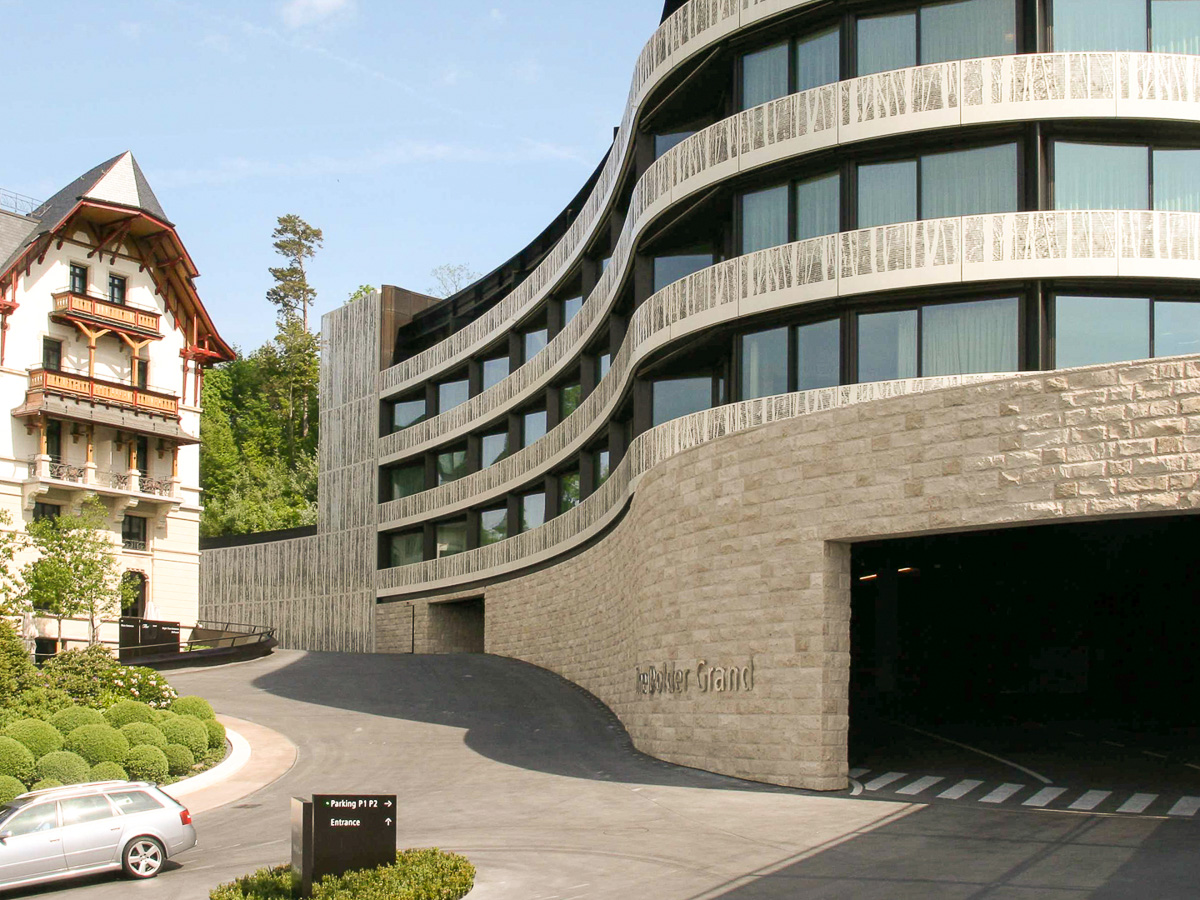 |
| |
2008, The Dolder Grand, Zürich, Switzerland, NORMAN FOSTER |
| |
|
| |
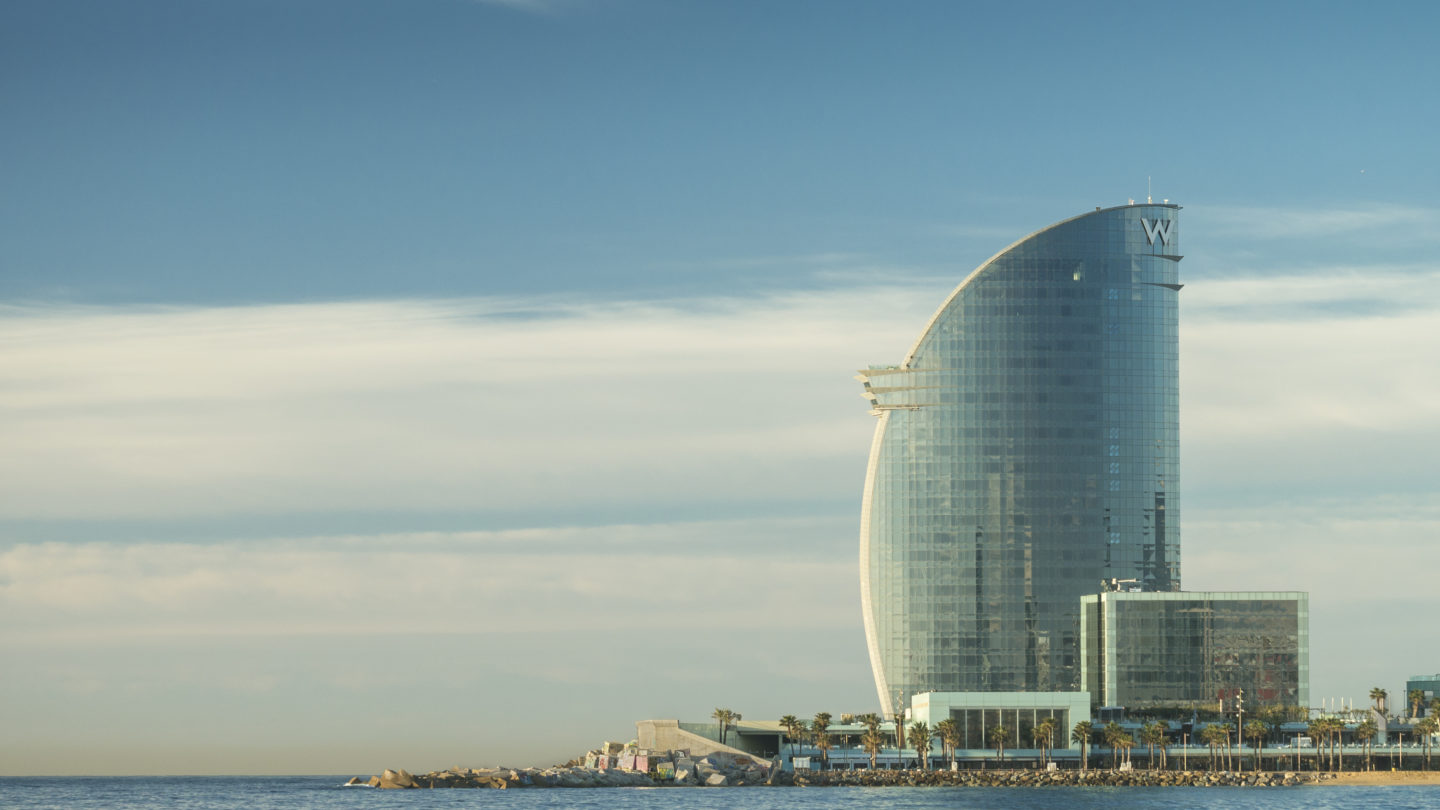 |
| |
2009, W Hotel Barcelona, Barcelona, Spain, RICARDO BOFILL |
| |
|
| |
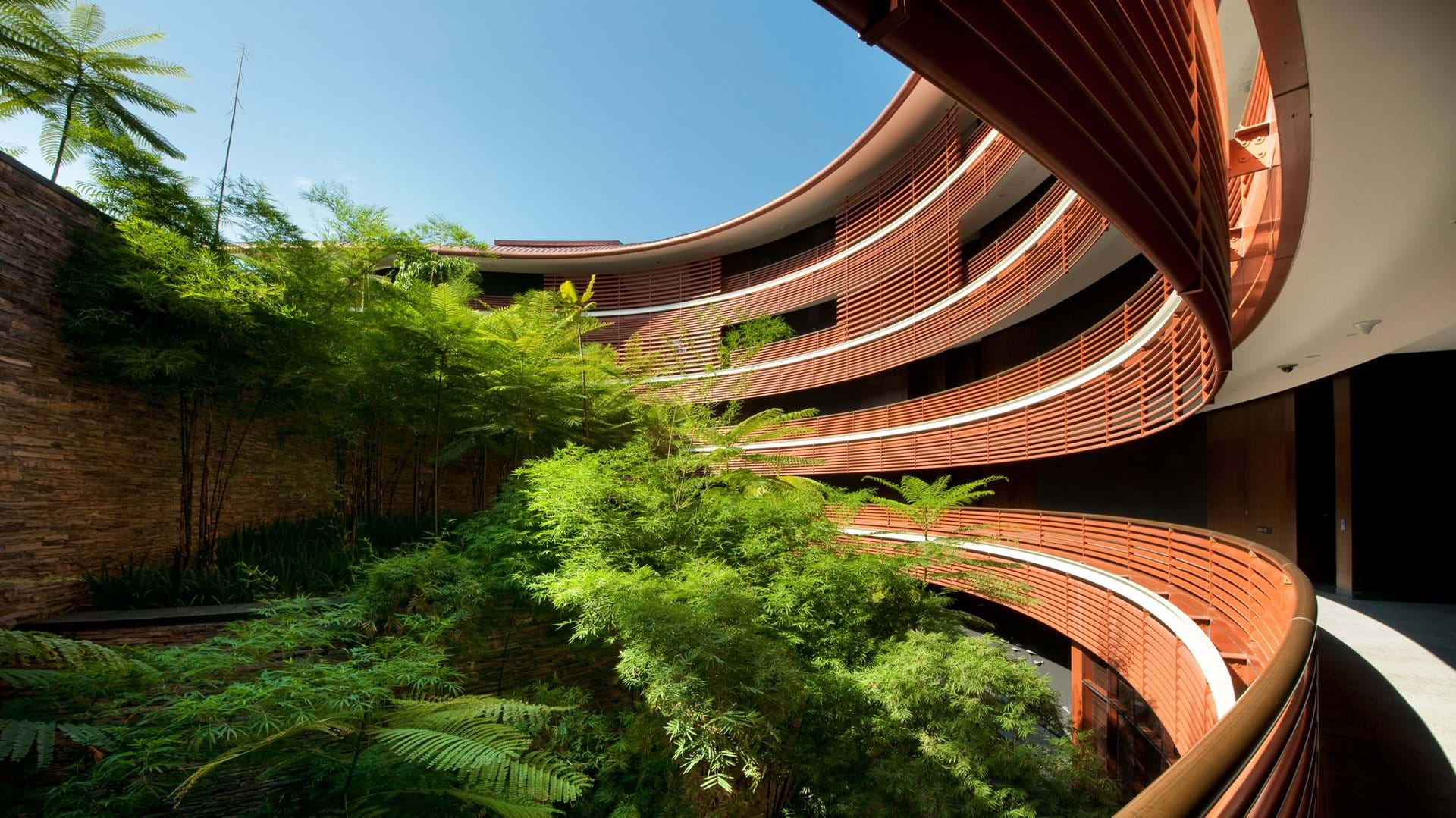 |
| |
2009, Capella Resort, Sentosa, Singapore, NORMAN FOSTER |
| |
|
| |
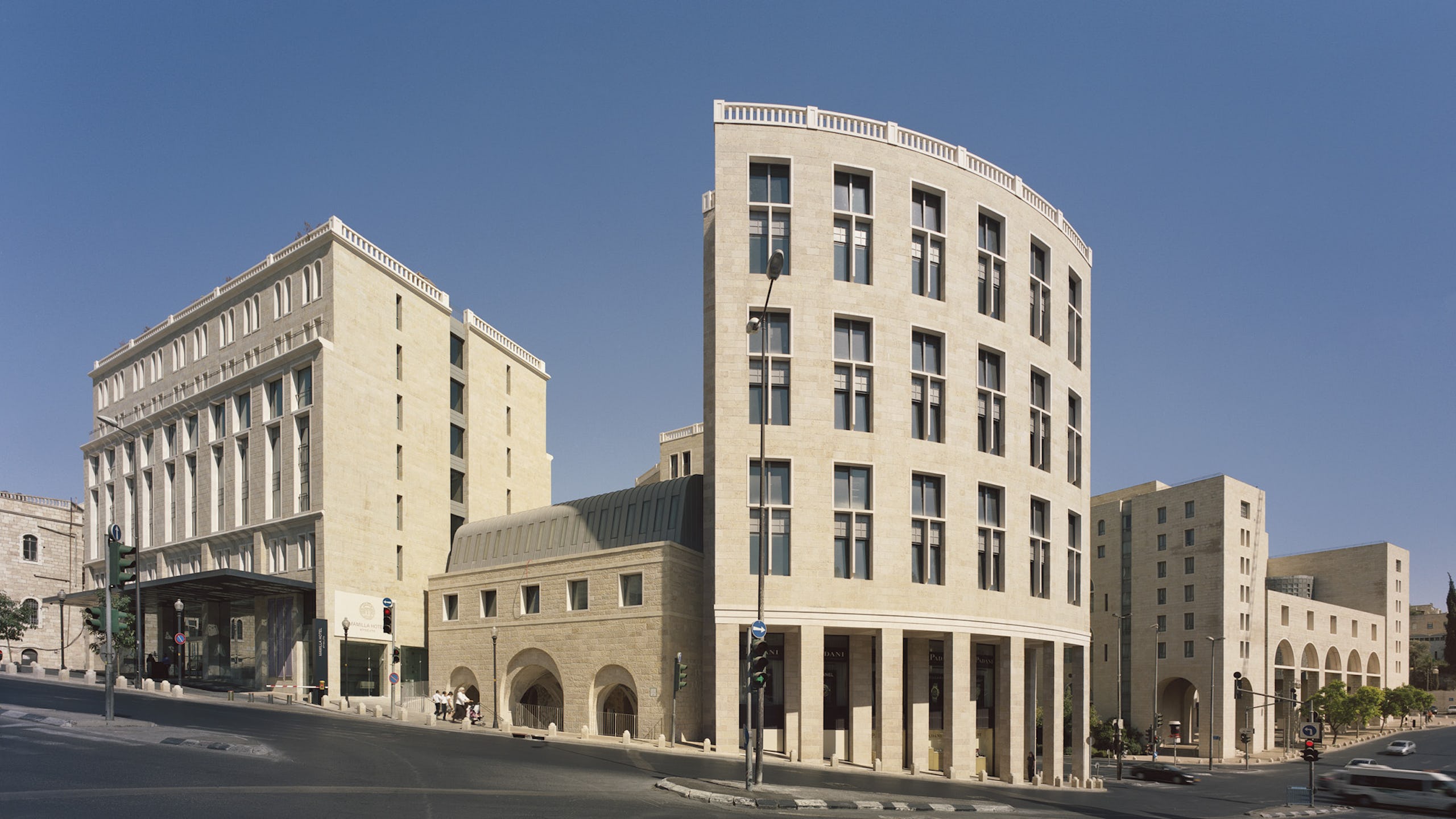 |
| |
2009, Mamilla Hotel, Jerusalem, Israel, MOSHE SAFDIE |
| |
|
| |
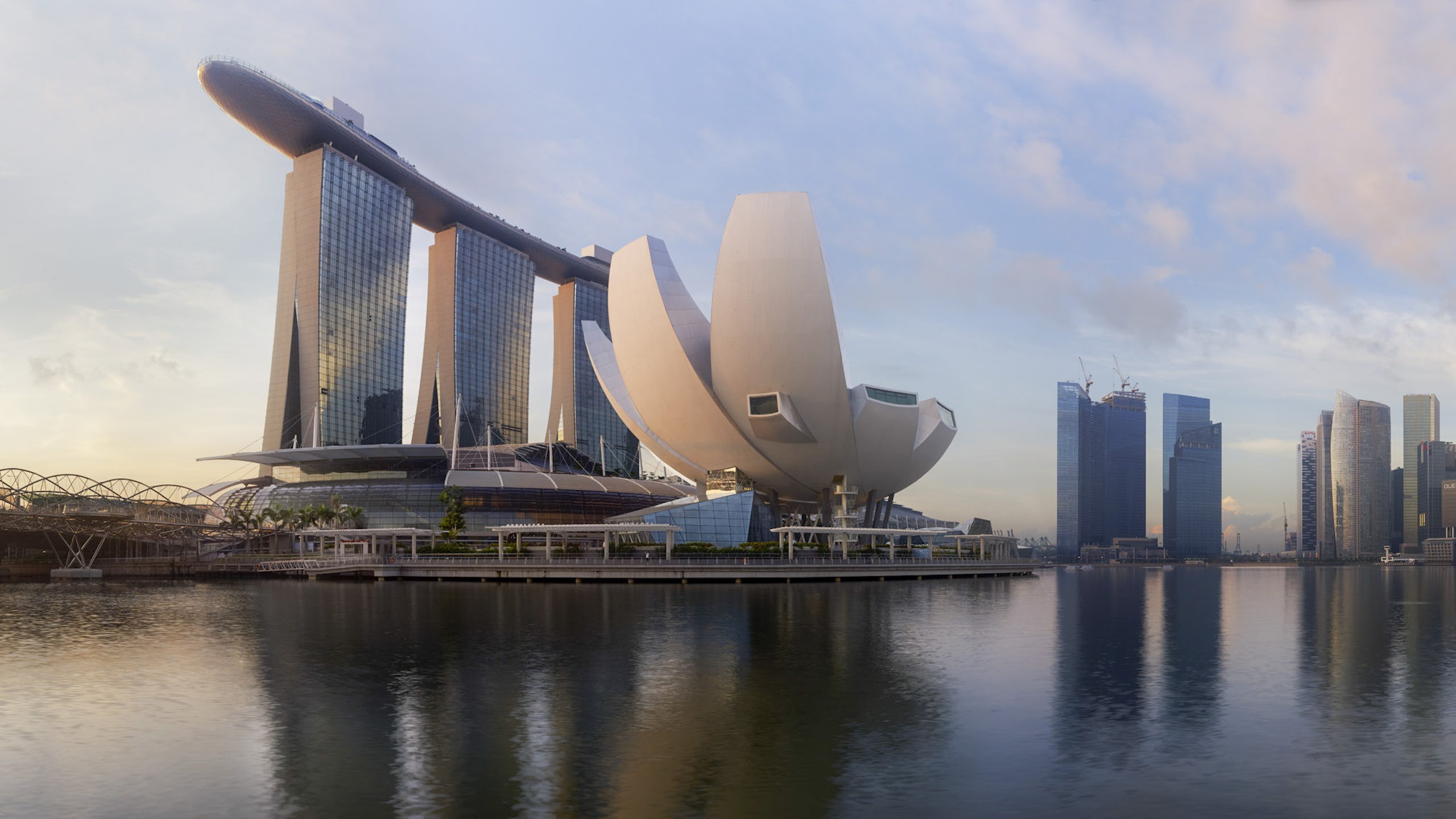 |
| |
2010, Marina Bay Sands, Singapore, MOSHE SAFDIE |
| |
|
| |
|
| |
|
| |
|
| |
|
| |
|
| |
|
| |
|
| ARCHITECTS |
|
| |
BOFILL, RICARDO
BOTTA, MARIO
FOSTER, NORMAN
NOUVEL, JEAN
SAFDIE, MOSHE
TANGE, KENZO |
| |
|
| |
|
| |
|
| |
|
| |
|
| |
|
| |
|
| BUILDINGS |
|
| |
1922, Imperial Hotel, Tokyo, JAPAN, FRANK LLOYD WRIGHT |
| |
|
| |
1951, HOTEL TIJUCO, DIAMANTINA, BRAZIL, OSCAR NIEMEYER |
| |
|
| |
1957, BRASÍLIA PALACE HOTEL, BRASILIA, BRAZIL, 2 |
| |
|
| |
1960-1969, Resort town, Flaine, Haute Savoie, FRANCE, MARCEL BREUER |
| |
|
| |
1961, Atami Garden Hotel, Kanagawa, JAPAN, KENZO TANGE |
| |
|
| |
1973–1980, Porto Carras, Chalkidiki, Greece, WALTER GROPIUS |
| |
|
| |
1982, Akasaka Prince Hotel, Tokyo, JAPAN, KENZO TANGE |
| |
|
| |
1982, Fragrant Hill Hotel, Beijing, CHINA, I.M. PEI |
| |
|
| |
1987-1989, The St.James hotel, Bouliac, France, JEAN NOUVEL |
| |
|
| |
1993, APA HOTEL & RESORT TOKYO BAY Central Tower, Chiba, JAPAN, KENZO TANGE |
| |
|
| |
1993, Costes K Hotel, Paris, France, RICARDO BOFILL |
| |
|
| |
1994, Shinjuku Park Tower (Park Hyatt Tokyo), Tokyo, JAPAN, KENZO TANGE |
| |
|
| |
1995, Takamiya Hotel Rurikura Resort ( Former Zao Recreation Center for Department of Defense Mutual Aid Association), Yamagata, JAPAN, KENZO TANGE |
| |
|
| |
1998, David Citadel Hotel,
Jerusalem, Israel, MOSHE SAFDIE |
| |
|
| |
2003-2005, Puerta America Hotel, Madrid, Spain, JEAN NOUVEL |
| |
|
| |
2003-2006, Tschuggen Bergoase, Arosa, SWITZERLAND, MARIO BOTTA |
| |
|
| |
2004-2012, Square and spa, Rigi Kaltbad, Switzerland, MARIO BOTTA |
| |
|
| |
2005-2010, Sofitel Hotel, Vienna, Austria, JEAN NOUVEL |
| |
|
| |
2006-2012, Hotel Twelve, Shanghai, China, MARIO BOTTA |
| |
|
| |
2008, The Dolder Grand, Zürich, Switzerland, NORMAN FOSTER |
| |
|
| |
2009, W Hotel Barcelona, Barcelona, Spain, RICARDO BOFILL |
| |
|
| |
2009, Capella Resort, Sentosa, Singapore, NORMAN FOSTER |
| |
|
| |
2009, Mamilla Hotel, Jerusalem, Israel, MOSHE SAFDIE |
| |
|
| |
2010, Marina Bay Sands, Singapore, MOSHE SAFDIE |
| |
|
| |
|
| |
|
| |
|
| |
|
| |
|
| |
|
| MORE |
|
| |
INTERNAL LINKS
HOLABIRD, WILLIAM;
FURTHER READING
A comprehensive archisectural history of the hotel has yet to be written,
and many of the available secondary sources are general or anecdotal
in nature. Hotel trade journals such as Hotel Monthly and Honed World
are useful for tracing this building type's development.
Bruegmann, Robert, "Palaces of Democracy: The Busines Hotel,"
in The Architects and the City: Holabird and Roche of Chiorge,
1880-1918. Chicago: University of Chicago Press, 1997
Denby, Elaine, Grand Hotte: Reality and Ilasion: An Architectural
and Social History. London: Reaktion Books, 1998
Done, Catherine. Alexis Gregory, and Marc Walter, Palaces et
grands heter d'Amerique da Nord, Paris: Flammarion, 1989; as
Grand American Horek, New York: Vendome Press, and London:
Thames and Hudson, 1989; as Grand Hotels of North America,
Toronto: McClelland and Stewart. 1989
Jakle, John A., Keich A. Sculle, and Jefferson S. Rogers, The Motel
in America, Baltimore, Maryland: Johns Hopkins University
Press, 1996
Lapidus, Morris, and Alan Lapidus, "Commercial Hotels," in
Time-Saver Standards for siding Types, edited by Joseph De
Chiara and John Hancock Callender, New York: McGraw-Hill
1973; 3rd edition, 1990
Pevsnct, Nikolaus, A Histury of Building Tapes, Princeton, New
Jersey: Princeton University Press, and London: Thames and
Hudson, 1976
R
Raitz, Karl B., and fol Paul Jones, Ill, "The City Hotel as
Landscape Artifact and Community Symbol," Journal of Cultural
Geography (1988)
Root, John Wellborn, "Hocels and Apartment Hotels," in Forms and
Functions of Twentieth-Century Archisecture, vol. 3; Building
Types: Buildings fur Residence, for Popular Gatherings for
Education, and for Government, edited by Talbot Hamlin, New
York: Columbia University Pres, 1952
Williamson, Jefferson, The American Hotel: An Anvodotal Hissory,
New York and London: Knopf, 1930, reprint, as The American
Hotel, New York: Arno Press, 1975 |
| |
|
|

